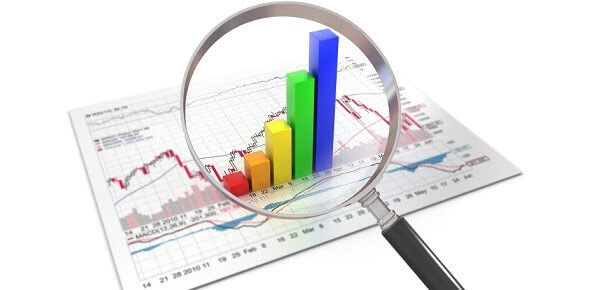Investment Guide: 4 Methods To Pick The Right Stock

Table of Contents
This article is sponsored by Securities Commission Malaysia, under its InvestSmart initiative.
Rick Ferri, a columnist for Forbes magazine and famous for being a leader in low-cost index fund investing once published an article titled “Any Monkey Can Beat the Market” back in 2012. Although the premise of the article seemed ridiculous, it was never about making random choices and somehow beating the market. Rather, the article emphasised how smaller company stocks and value stocks can outperform the market over a long period of time (despite being picked at random by dart-throwing monkeys).
According to Ferri, you don’t need a monkey (or a human for that matter) to help you pick the right stocks. Instead, an all index fund portfolio in all asset classes all the time has a much higher probability of outperforming most portfolios that are trying to beat the market.
Ferri emphasised a balanced, all-encompassing and methodical approach to investing. Although there are close to a thousand publicly traded companies on both main and ACE markets under Bursa Malaysia, the core of your stock portfolio should consist of financially strong companies with above-average earnings growth.
Fortunately, picking the right stock is not rocket science – you just need to find a good stock at a good price! Here are some tried-and-tested methods to help you take a calculated risk and make an informed investment decision when picking stocks.
Method 1: Macroeconomics Analysis
In macroeconomics analysis, investors focus on the trends and movements in the economy as a whole. With this method, you need to understand what forces move a particular country’s economy before selecting the stock(s). By understanding how the economy is performing, investors can buy the stock(s) when they think the economy will improve, and sell them when they think the economy will deteriorate.
Who should use this method? Long-term investors who plan to leave their investments untouched for at least five to 10 years. Investors should have some basic knowledge of macro-economics to analyse the data.
How? First, compile data on the country’s GDP (gross domestic product), CPI (consumer price indices), PPI (producer price indices), unemployment rate, interest rates, inflation rate, and balance of trade. Then look for the general direction that the numbers are moving in and any patterns that may emerge. Finally, make an investment decision based on those numbers.
What kind of stocks should I pick? As this method is directly influenced by the economy, the stocks that you pick based on the findings should be broad-based stocks that move in line with the country’s economic situation.
Method 2: Fundamental Analysis
The key to fundamental analysis in stock-picking is to find the intrinsic value of the stocks – which is the true value of the stock, and not the share price. If the intrinsic value is more than the current share price, your analysis would show that the stock is worth more than its price and that it would make sense to buy the stock. This is usually a long-term play but can be short-term depending on the situation.
Who should use this method? Active and long-term investors who are willing to closely monitor market movements and take action accordingly. Those with a deep understanding of how to analyse a company’s financial situation, and then are able to identify whether a company is fundamentally undervalued or not.
How? Pay particular attention to the P/E (price to earnings ratio), EBIDTA (Earnings before interest, depreciation, tax and amortization), free cash flow, debt ratio and other core financial information. This information is usually available in the annual report but you will need to do some manual calculations as well. If you have access to an online share trading broker, the calculations and reports in a simpler format may be available for you.
What kind of stocks should I pick? If you have conducted fundamental analysis, consider buying a stock if the company shows good value, but is presently being sold for less. This method can be applied across the board for any type of stock since you are basing it solely on fundamentals.
Method 3: Qualitative analysis
If calculations and crunching numbers are not your preferred method, how about considering qualitative analysis? Instead of analysing charts, spreadsheets and numbers, try evaluating a company based on subjective judgements, such as the management team, the industry it is in and the human resources. This method is recommended for medium to long-term investors.
Who should use this method? Experienced investors
How? Identify the management team of the company and evaluate them based on the five WH- questions (who, when, where, why and what), as well as the business model of the company. Think of yourself as a potential owner of the company, and find out all you can about the industry the company is in, its competition, and lastly, the brand name itself.
What kind of stocks should I pick? A company with a strong backbone (strong management team) would tend to have a lower chance of failing.
Method 4: Technical analysis
Technical analysis is the exact opposite of fundamental analysis. An investor who favours technical analysis is also known as a chartist, studying and scrutinising charts of historical prices and different indicators to make an inference about the future movement of a stock’s price. This is a short-term play.
Who should use this method? Experienced and active investors who tend to focus on capital gains through active and frequent trades.
How? Analyse the statistics generated by past market activity, but with the belief that prices and volumes within all markets are efficient, prices move in trends and that history will generally repeat itself. By studying the market action using price charts, investors can then forecast a stock’s price direction.
What kind of stocks should I pick? As this method primarily focuses on chart movements, it is not confined to any particular industry or company.
Conclusion
The above four methods are among the most common strategies used by investors to help them decide on the best stocks that fit their portfolio. Every strategy has its own merits, but it is important to note that there is no method that is infallible or absolute.
The explanations we have shared for each method is brief and basic. Regardless, to make a calculated and informed investment decision, one must conduct thorough research and analysis beforehand.
© Securities Commission Malaysia (SC). Considerable care has been taken to ensure that the information contained here is accurate at the date of publication. However no representation or warranty, express or implied, is made to its accuracy or completeness. The SC therefore accepts no liability for any loss arising, whether direct or indirect, caused by the use of any part of the information provided. The information provided is for educational purposes only and should not be regarded as an offer or a solicitation of an offer for investment or used as a substitute for legal or other professional advice. For enquiries regarding sharing, republishing or redistributing this content please write to: admin@investsmartsc.my.
Looking for the right credit card to boost your finances. Check out all the credit cards offered in Malaysia and pick the best one.















